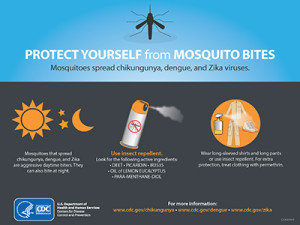In a previous blog post, I covered how a person can become infected with the Zika virus. The pathways for infection include:
- Bite from an infected mosquito.
- Sexual intercourse with a person infected with the virus.
Prevention is critical; safety tactics include using DEET insect repellant, wearing protective clothing, eliminating standing water, avoiding impacted geographic areas, and using condoms.

United States Zika cases
Cases of Zika have been confirmed in 47 states, with 1,657 confirmed cases as of the end of July 2016. The virus is believed to have been acquired through travel outside of the United States. The highest concentrations of cases to date are in New York (449) and Florida (307). The only states without confirmed cases are South Dakota, Wyoming and Idaho.
Symptoms, testing and treatment
Most individuals infected with the virus will not have symptoms or will experience only mild symptoms that can include fever, rash, joint pain, conjunctivitis, muscle aches and headaches. The symptoms can last a few days or up to one week. The virus is detectable in blood and urine and can be tested by a health care provider. It is believed that once a person is infected, he/she is protected from future infections. There is no known treatment for this virus; the best approach is rest, supportive medications like acetaminophen and plenty of fluids.
Advice for those thinking about getting pregnant
- Women who have been infected with Zika should wait at least eight weeks before trying to get pregnant.
- Men should wait at least six months after symptoms began before attempting unprotected sex.
- Women and men who have traveled to a known Zika exposure area should wait at least eight weeks before trying to get pregnant.
Vaccines
There have been three vaccines developed for the virus that have shown complete prevention in monkeys and are now ready for human clinical trials. Phase I clinical trials have begun, and if all goes well these vaccines may be ready for phase II trials in January 2017.
Teresa Bartlett, MD
SVP, medical quality, Sedgwick